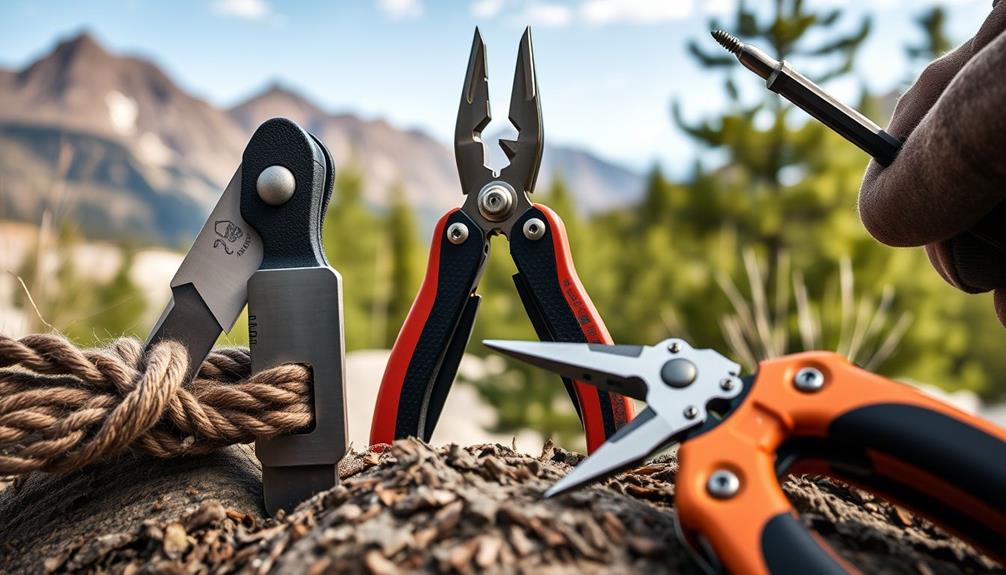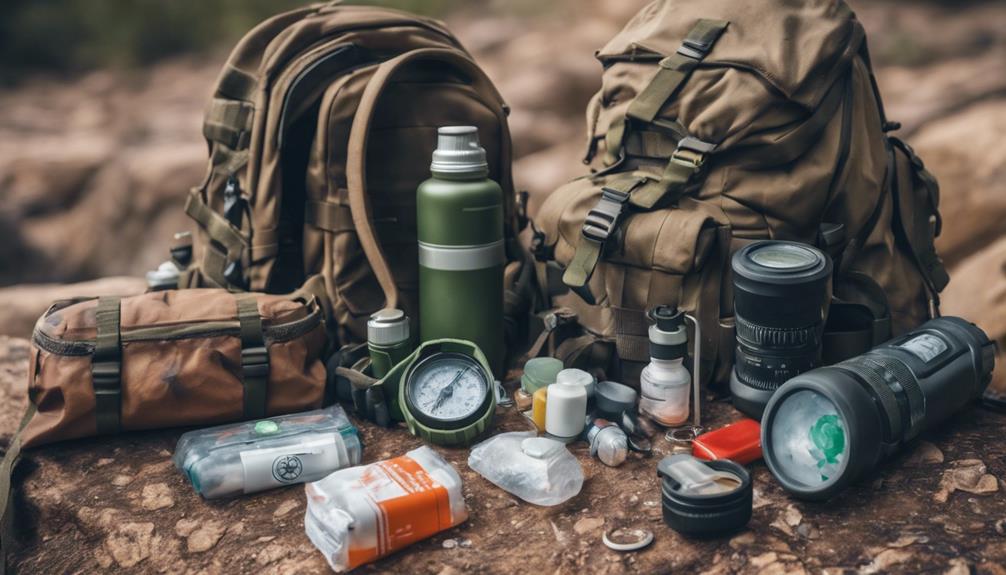Super glue can be your first aid lifesaver for minor injuries. It's a simple and effective way to close small wounds, reducing the risk of infection. Make certain to choose medical-grade options that are safe for your skin. Before applying, clean the wound area to guarantee proper adhesion. Use a thin layer and hold the edges together for about 30 to 60 seconds. Remember, it's not a replacement for professional care in serious injuries. Curious about the best practices and types available? You'll find helpful insights that can enhance your first aid skills.
Key Takeaways
- Super glue quickly closes small wounds, reducing infection risk and providing a waterproof barrier.
- Use medical-grade super glue specifically designed for skin to ensure safety and effectiveness.
- Clean the wound area thoroughly before applying a thin layer of glue to ensure strong adhesion.
- Hold the wound edges together for 30-60 seconds to achieve optimal bonding strength.
- Always monitor for allergic reactions or irritation following application, and consult a professional for serious injuries.
Overview of Super Glue

When it comes to emergency first aid, the simplicity and effectiveness of super glue can be a lifesaver. This instant adhesive can quickly close small wounds, greatly reducing the risk of infection by sealing them effectively.
Super glue provides a waterproof barrier, making it an excellent alternative to traditional sutures, especially in survival situations. Reliable options like 3M Vetbond, which dries in just 10 seconds, and Gorilla Super Glue Gel, drying in 45 seconds, are essential for rapid recovery.
However, remember to clean the wound thoroughly before application. While super glue is a handy temporary solution, it's not a substitute for professional medical treatment for serious injuries, so always seek appropriate care when needed.
Types of Super Glue

While there are various types of super glue available, it's vital to choose one specifically designed for medical use when applying it for first aid. Most super glues contain cyanoacrylate, but medical-grade options are formulated for safe skin application.
You'll find waterproof varieties that work well in wet environments, as well as flexible formulations that accommodate skin movement. When selecting a super glue, consider features like bond strength, quick drying time, and durability against water and UV exposure.
Look for convenient packaging, such as small multi-pack tubes, which allows for quick access during emergencies. Each product has unique features, so it’s important to pick one suited for your first aid kit to guarantee effective wound care. Consider including a vital antibiotics kit in your first aid supplies, as it can be crucial in treating infections and preventing further complications. Look for one that includes a variety of antibiotics to cover a range of potential infections. Having this kit readily available can make a significant difference in providing prompt and effective treatment in emergency situations.
Application Techniques

Effective application techniques are essential for maximizing the benefits of super glue in first aid situations.
To guarantee proper use, follow these steps:
- Clean the wound area thoroughly to prevent infection.
- Apply a thin layer of glue only to the edges of the wound.
- Hold the edges together for 30-60 seconds to achieve strong adhesion.
- Avoid excessive glue to minimize skin irritation.
- Monitor for allergic reactions or irritation post-application.
Safety Considerations

Safety is paramount when using super glue for first aid, and there are several key considerations to keep in mind. Always choose a product specifically labeled as safe for skin use. Avoid contact with eyes and mucous membranes, and don't use it on deep or puncture wounds without consulting a medical professional. Store your super glue in a cool, dry place, out of reach of children, and check expiration dates regularly.
| Consideration | Action | Note |
|---|---|---|
| Product Safety | Verify it's skin-safe | Look for medical-grade options |
| Avoid Sensitive Areas | Don't let it touch eyes/mucous | Risk of irritation or injury |
| Storage | Keep out of children's reach | Prevent accidental use |
Best Practices

To maximize the effectiveness of super glue in first aid, it's important to follow best practices during application. Here are some tips to guarantee you're using it safely and effectively:
- Choose medical-grade super glue specifically designed for skin use.
- Clean the wound area thoroughly to prevent infection.
- Apply a thin layer and hold the edges together for 30-60 seconds.
- Monitor for any reactions like irritation or allergic responses after application.
- Store it properly in a cool, dry place and keep it out of reach of children.
Repairing Survival Gear

In survival situations, having reliable tools at your disposal can make all the difference, and super glue is a standout choice for repairing gear.
Whether you've got a torn backpack, a broken tent pole, or damaged first aid equipment, super glue can bond materials like fabric, plastic, and metal quickly and effectively.
Its strong, water-resistant properties guarantee that your repairs hold up, even in challenging conditions.
Unlike duct tape, which can peel away, super glue creates a durable fix that enhances your preparedness for emergencies.
Just remember to clean the surfaces before applying, and keep some nitrile gloves handy to protect your hands.
With super glue, you can tackle gear failures without missing a beat.
Key Takeaways

Super glue is an invaluable tool in both first aid and survival situations, offering quick and effective solutions for wound closure and gear repairs.
Here are some key takeaways to remember:
- Use medical-grade super glue specifically designed for skin to guarantee safety.
- Clean the wound thoroughly before applying for the best results.
- Apply a thin layer, holding the edges together for 30-60 seconds.
- Super glue can effectively seal small cuts and wounds, but it's not a substitute for professional medical care.
- Keep super glue in your first aid kit and make sure you check expiration dates regularly.
Frequently Asked Questions
Can Super Glue Be Used on Animal Wounds?
Yes, you can use super glue on minor animal wounds, but make certain it's a medical-grade product. Clean the area, apply carefully, and monitor for irritation. Always consult a vet for serious injuries or concerns.
How Long Does Super Glue Last Once Opened?
Once you open super glue, it typically lasts about a month if stored properly. Keep it in a cool, dry place, and close it tightly—much like sealing a treasure chest to protect your valuables.
Is Super Glue Effective for Surgical Closures?
Yes, super glue can effectively close minor surgical wounds. Verify you use a medical-grade version, clean the area thoroughly, and hold the edges together to guarantee proper adhesion for ideal healing.
Can I Use Super Glue on Sensitive Skin?
Imagine you're on a medieval battlefield. You can use super glue on sensitive skin, but it's essential to choose a medical-grade product, apply it carefully, and monitor for irritation or allergic reactions afterward.
What Should I Do if Glue Gets in My Eyes?
If glue gets in your eyes, don't panic. Rinse your eyes immediately with water for at least 15 minutes. Seek medical attention if irritation persists or vision is affected. Avoid rubbing your eyes.
Conclusion
In the grand tapestry of life's little surprises, super glue stands out as an unsung hero. When you're faced with unexpected injuries or gear mishaps, this trusty adhesive can be your secret weapon. It's not just for crafting; it's a first aid lifesaver waiting in your toolkit. By embracing super glue, you're not just patching up wounds; you're weaving a safety net for your adventures. So, keep it handy and let it be your silent partner in preparedness!










